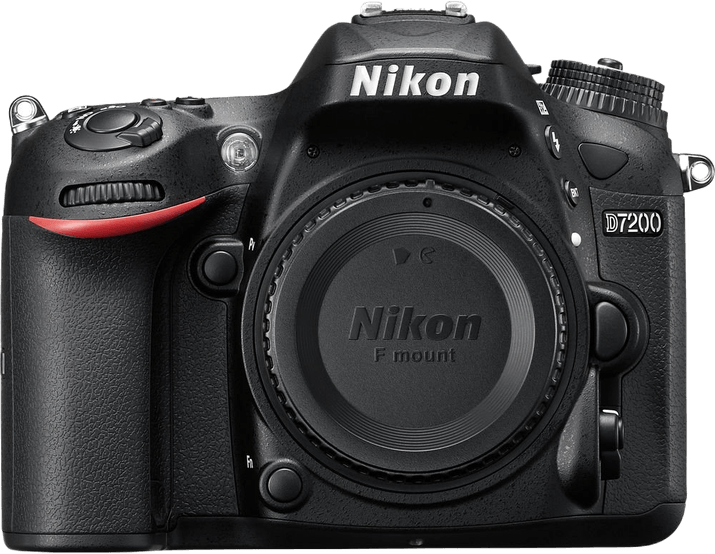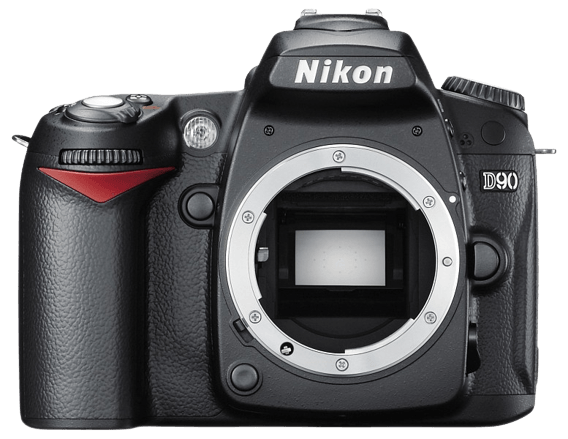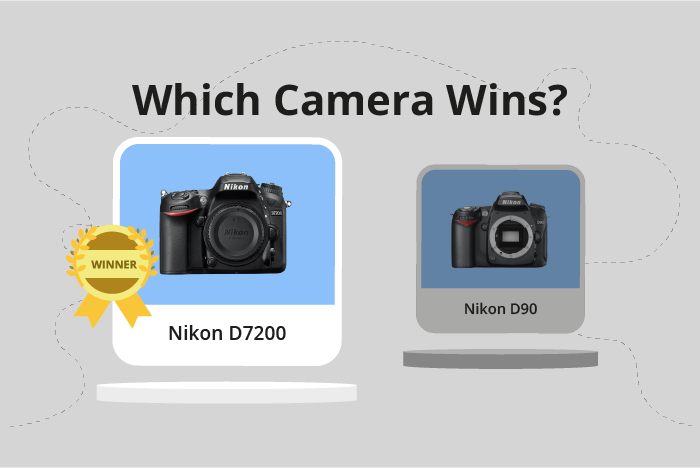Nikon D7200 vs D90 Comparison
Nikon D7200

Nikon D90

The Nikon D7200 outperforms the Nikon D90 with a score of 68/100, a 24-point difference from the D90’s 44/100. Both cameras are DSLRs and have similar sizes, with the D7200 measuring 136 x 107 x 76mm and the D90 at 132 x 103 x 77mm. The D7200 is slightly heavier, weighing 765g compared to the D90’s 703g.
The D7200 has improved features, justifying its higher score. Released in 2015, it is seven years newer than the D90 and initially cost slightly less, with a launch price of $1200 compared to the D90’s $1235.
The D90, however, does have a slight advantage in terms of weight, being lighter by 62g. This can be beneficial for photographers who prioritize a lighter camera for portability and ease of use.
Taking all factors into account, the Nikon D7200 stands out as the better camera due to its enhanced features and more recent release, while the Nikon D90 may appeal to those seeking a lighter option.
Nikon D7200 vs D90 Overview and Optics
The Nikon D7200 outperforms the Nikon D90 in optics with a score of 71/100 compared to the D90’s 46/100. Both cameras share some common specifications, such as the CMOS sensor type, APS-C sensor size, Nikon F DX lens mount, and the lack of image stabilization. However, the D7200 surpasses the D90 in several aspects, making it the superior camera in terms of optics.
The D7200 has a higher megapixel count at 24.2, while the D90 has 12.3 megapixels. This difference allows the D7200 to capture more detailed images. Additionally, the D7200 has a faster shooting speed of 6 frames per second, compared to the D90’s 4.5 frames per second. This enables the D7200 to capture fast-moving subjects more effectively.
The D7200 also features a more advanced processor, the Expeed 4, which improves the camera’s overall performance and image quality. Furthermore, the D7200 has a higher DXOMARK score for its sensor at 87, while the D90’s score is 73. This indicates that the D7200’s sensor provides better image quality and low-light performance.
On the other hand, the D90 has some advantages over the D7200. It is a lighter camera, making it more portable and easier to handle. However, this advantage does not outweigh the significant improvements in optics offered by the D7200.
Based on these comparisons, the Nikon D7200 is the clear winner in terms of optics. With its higher megapixel count, faster shooting speed, better processor, and superior sensor performance, the D7200 provides better image quality and overall performance than the Nikon D90.
Nikon D7200 vs D90 Video Performance
When comparing the video capabilities of the Nikon D7200 and the Nikon D90, it is important to note that the Nikon D90 does not possess any video functionality. This makes the Nikon D7200 the only option for those seeking a camera with video capabilities within this comparison.
The Nikon D7200 has a video score of 70 out of 100, providing Full HD video resolution with maximum dimensions of 1920 x 1080. This camera also supports a maximum video frame rate of 60 fps, ensuring smooth and high-quality video capture. Additionally, the Nikon D7200 includes built-in time-lapse functionality, allowing users to create stunning time-lapse videos with ease.
Taking into account the video capabilities of these two cameras, the Nikon D7200 is the clear choice for those seeking a camera that can handle both photography and videography. The lack of video functionality in the Nikon D90 limits its versatility in comparison to the Nikon D7200, which offers a comprehensive set of video features for capturing high-quality video content.
Nikon D7200 vs D90 Features and Benefits
The Nikon D7200 triumphs over the Nikon D90 in features, boasting a score of 59/100 compared to the D90’s 41/100. Both cameras share some common specifications, such as the absence of a touchscreen, flip screen, GPS, and Bluetooth. However, the D7200 has a clear advantage in certain areas.
A notable difference between the two cameras lies in their screen size and resolution. The D7200 has a 3.2-inch screen with a resolution of 1,228,800 dots, while the D90 has a slightly smaller 3-inch screen with a lower resolution of 920,000 dots. This means that the D7200 provides a larger and sharper display for better image review and menu navigation.
The most significant advantage of the D7200 is its built-in Wi-Fi capability. This feature allows users to wirelessly transfer images and remotely control the camera using a smartphone or tablet. The D90, on the other hand, does not have built-in Wi-Fi, limiting its connectivity options and making it less convenient for modern users.
As for the D90, it is hard to identify any areas where it outperforms the D7200 in terms of features. The D90 is an older model, and it is understandable that its feature set may be less advanced than its successor.
Taking all factors into account, the Nikon D7200 clearly offers more advanced features than the Nikon D90. Its larger, higher-resolution screen and built-in Wi-Fi make it a more convenient and user-friendly option. While the D90 may have been a strong contender in its time, the D7200’s improvements make it the better choice for photographers seeking more advanced features in their camera.
Nikon D7200 vs D90 Storage and Battery
The Nikon D7200 outperforms the Nikon D90 in storage and battery capabilities with a score of 79/100 compared to the D90’s 37/100. Both cameras share some similarities in this aspect, such as accepting SD and SDHC memory cards and lacking USB charging options.
However, the D7200 has a clear advantage with its two memory card slots, accepting SDXC cards as well, and a longer battery life of 1110 shots using the EN-EL15 battery. This makes the D7200 more convenient and efficient for extended shooting sessions.
On the other hand, the D90 has only one memory card slot and a shorter battery life of 850 shots using the EN-EL3e battery. While this is less impressive than the D7200, it is still a decent battery life for casual photography.
Taking all factors into account, the Nikon D7200 is the superior camera in terms of storage and battery performance, offering greater flexibility and endurance for photographers. The Nikon D90, though not as impressive, remains a suitable option for those with less demanding storage and battery requirements.
Nikon D7200 vs D90 – Our Verdict
Are you still undecided about which camera is right for you? Have a look at these popular comparisons that feature the Nikon D7200 or the Nikon D90:

